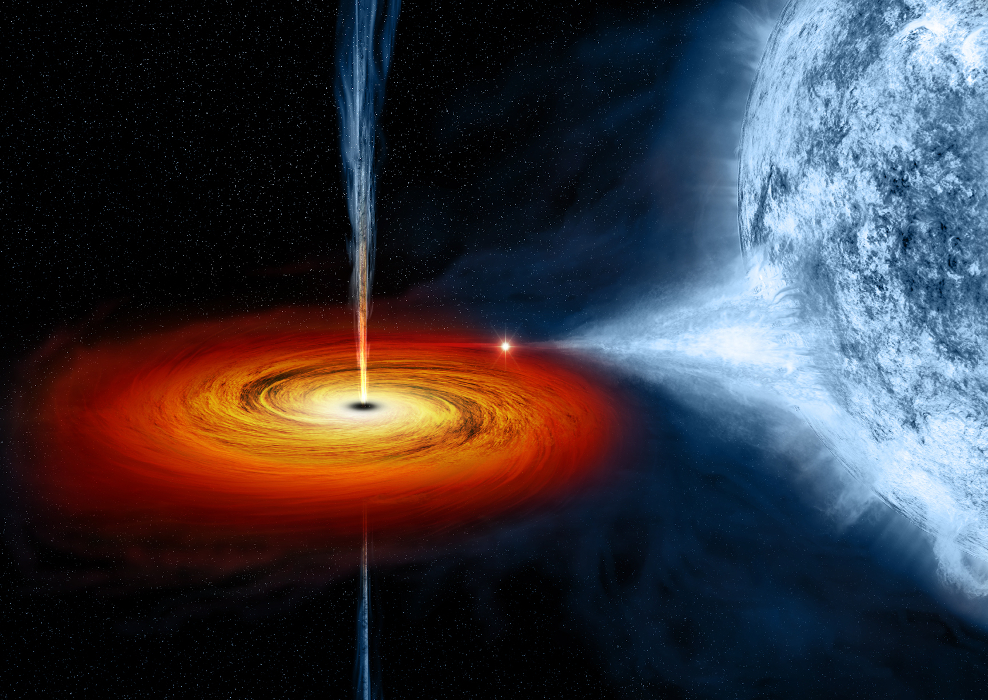
 Credit: NASA/CXC/M.Weiss
Credit: NASA/CXC/M.Weiss
Even Holier Than Thou
Measuring the mass of a black hole, an object that emits no radiation and occupies no space, is a tricky proposition. It requires scientists to go to extraordinary lengths (depths?) to determine black holes masses. The best measurements of black hole masses are obtained by studying the incredibly tiny gravitational waves they produce when two (or more?) black holes merge together - an almost unbelievably difficult task that was first accomplished only 5 years ago by the Laser Interferometer Gravitational-Wave Observatory (LIGO). The LIGO observations came as a bit of a surprise to astrophysicists, since the derived black hole masses were 5 to 10 times higher than black hole masses estimated through other techniques. The first object ever claimed to be a black hole is an X-ray binary system called Cygnus X-1, located as a bright X-ray source by the Uhuru satellite in the 1970's. Cyg X-1's mysteriously bright X-rays, we know now, are produced as the black hole accretes extremely hot matter from a massive blue companion star. The image above shows an illustration of the Cyg X-1 binary; the black hole is hidden at the center of the disk of hot matter stolen from the companion, and a radio-emitting particle beam shoots into space at the center of the disk, fortunate stuff which escapes the ravenous maw of the black hole. Now, a new detailed study of high resolution radio images of Cyg X-1 shows that the binary is more distant than previous estimates suggested. The radio images also provided extremely precise measurement of the position of the radio jet from Cyg X-1 over a complete 5.8-day orbit, allowing astronomers to measure the motion of the black hole as it swings around the companion star. The new measurements show that the black hole in Cyg X-1 is 21 times the mass of the Sun, about 50% larger than previous estimates. Interestingly, this larger mass is more comparable to the masses of the black holes in the mergers observed by the gravitational wave observatories. The higher mass of the black hole suggests that it formed from the collapse of an extremely massive star which was about 50 to 75 times more massive than the Sun.
Published: March 15, 2021
<
HEA Dictionary ● Archive
● Search HEAPOW
● Other Languages
● HEAPOW on Facebook
● Download all Images
● Education ● HEAD
>

Each week the HEASARC
brings you new, exciting and beautiful images from X-ray and Gamma ray
astronomy. Check back each week and be sure to check out the HEAPOW archive!
Page Author: Dr. Michael F. Corcoran
Last modified Monday, 26-Feb-2024 17:21:08 EST


